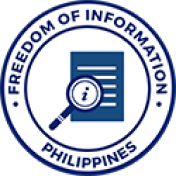

Rationale
Traditional medicine throughout the world recognizes the significance of therapeutic massage in managing stress, illness or chronic ailments. Massage therapy is considered the oldest method of healing that applies various techniques like fixed or movable pressure, holding, vibration, rocking, friction, kneading and compression using primarily the hands and other areas of the body such as the forearms, elbows or feet to the mascular structure and soft tissues of the body.
Massage therapy can lead to significant biochemical, physical, behavioral and clinical changes in massage as well as the person giving the massage. It contributes to a higher sense of general well-being. Recognizing this, many healthcare professionals have begun to incorporate massage therapy as a complement to their routine clinical care. Efficacy of massage therapy in patient ranges from pretern neonates to senior citizens. Although the country has the training standards and regulations through the Technical Education and Skills Development Authority (TESDA), it lacks control / regulations over the training institutions, thus, anyone who calls himself/herself a massage therapist is one, regardless of training or experience.
Objective:
The Department of Health created the Committee of Examiners for Massage Therapy (CEMT) to regulate the practice of massage therapy in accordance to the provisions of the Sanitation Code of the Philippines (PD 856) and Executive Order No. 102 s. 1999, Reorganization and Streamlining of the Department of Health. It provides the CEMT the function to ensure that only qualified individuals enter the regulated profession and that the care and services which the massage therapists provide are within the standards of practice.
Strategies:
To ensure that only qualified individuals enter the regulated profession and that the care and services which the massage therapists provide are within the standards of practice, the DOH-CEMT created:
- CEMT Resolution No. 2011-001 – Three-Year Transition Period for Compliance to Administrative Order No. 2010-0034.
- Memorandum dated August 10, 2010 – to the Centers of Health Development (CHDs) Human Resource Development Units (HRDUs) regarding Updates on the Committee of Examiners for Massage Therapy (CEMT) Program
- Administrative Order No. 2010-0034 – Revised Implementing Rules and Regulations of PD 856 Chapter XIII Governing Massage Clinics and Sauna Establishments
- CEMT Resolution No. 2010-001 – Adoption of the Code of Ethics for Massage Therapists in the Philippines.
- CEMT Resolution No. 2009-001 – Creation of Committee for Continuing Massage Therapy Education Council (CMTEC)
- CEMT Resolution No. 2008-001 – Conduct of Licensure Examination for Massage Therapists in Centers for Health Development (CHDs) to conduct a simultaneous licensure examination in the Central Office and the CHDs with a minimum of 50 examinees for cost effectiveness.
- Department Memorandum No. 2008-0009 – Designation of DOH Human Resource Development Units (DOH-HRDUs) as Coordinators for Massage Therapy Program to facilitate immediate response to queries and complaints regarding the massage therapy practice.
- CEMT Resolution No. 2008-001 – Accredited training institutions and training providers for massage therapists for CY 2008-2011 to regulate existing and potential training providers and training institutions for massage therapists for the enhancement and maintenance of its professional standards.
- CEMT Resolution No. 2008-002 – Extension of Moratorium as per CEMT Resolution No. 2008-001
- CEMT Resolution No. 2008-001 – Moratorium on the Non-Renewal of Licenses for Embalmers for the past five (5) years and over with the aim of providing chance to licensed embalmers who were unable to renew their licenses for the past five years and over
- Administrative Order No. 2008-0031 – Policies and Guidelines for the Accreditation of Training Institutions, Training Programs and Trainining Providers for Massage Therapists in the Philippines with the aim of institutionalizing the continuing education program for massage therapists in the country. Hence, to ensure the maintenance of efficient, ethical and technical, moral and professional standards in its practice, taking into account the quality of care to be rendered to respective clientele. At the same time, the regulation ensures the global competitiveness of the massage therapists.
Chapter XIII “Massage Clinics and Sauna Establishments mandate the CEMT to monitor and enforce quality standards of massage therapy practice in the Philippines and exercise the powers necessary to ensure the maintenance of efficient, ethical and technical, moral and professional standards in its practice, taking into account the quality of care to be rendered to respective clientele. At the same time, the regulations ensure the global competitiveness of the Filipino massage therapists.
Program Status
Nationwide information dissemination of the following:
- Administrative Order No. 2010-0034 (Massage Clinics and Sauna Establishments)
- Curriculum for Licensure Examinations
- Manuals for Licensure Examinations
- Code of Ethics
1. March 25, 2011 – National Capital Region
2. May 3, 2011 – Visayas Regions (Iloilo City)
3. May 13, 2011 – Mindanao Region (Cagayan de Oro City)
4. June 30, 2011 – Butuan City (upon request)
5. August 25, 2011 – Aklan (upon request)
Coordinators:
Dr. Josephine Hipolito / Ms. Winsell Joy Manalo
Health Human Resource Development Bureau
Phone No: 651-7800 local 4204/4227
Email: [email protected]


